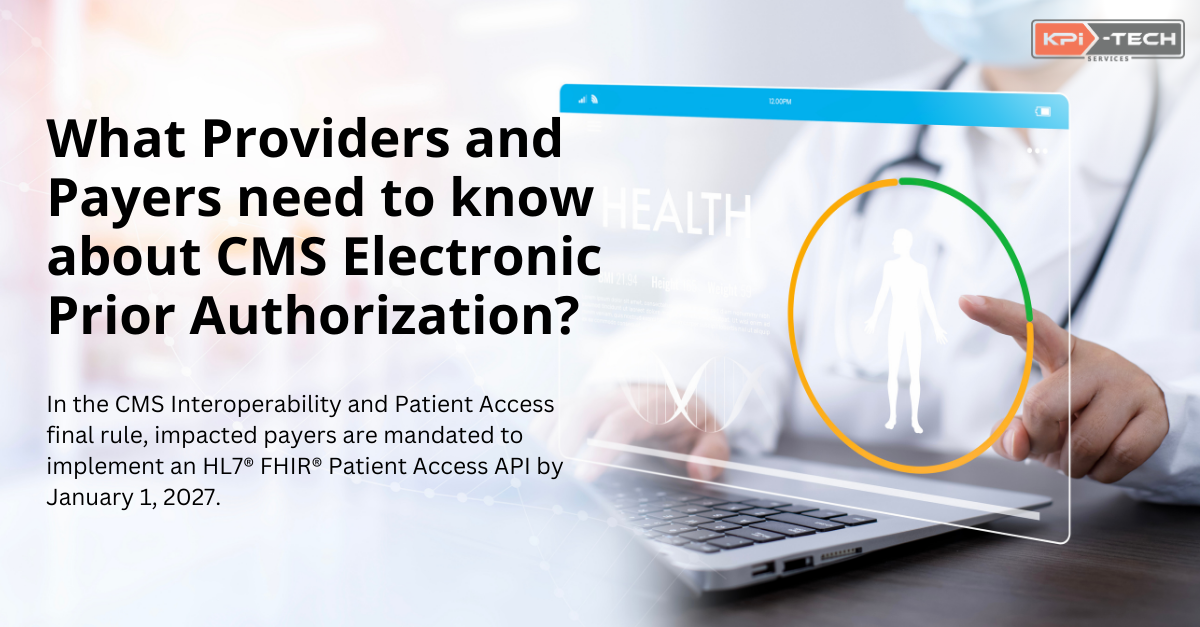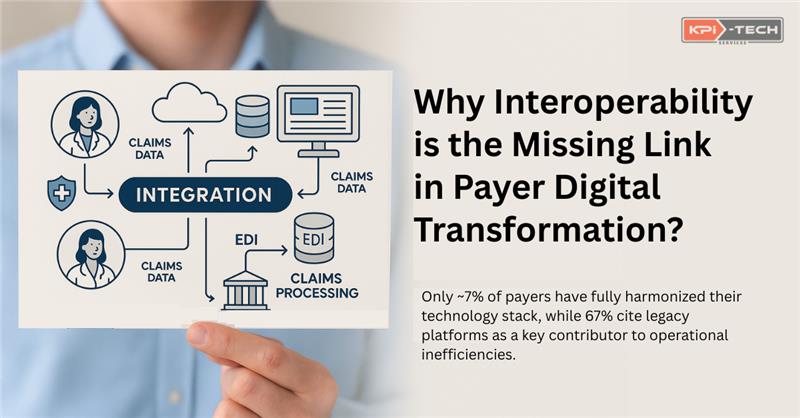
OBBBA and CMS Final Rule: Why Interoperability Is No Longer Optional for Payers
The One Big Beautiful Bill Act (OBBBA), signed on July 4, 2025, together with the CMS Final Rule, has fundamentally reshaped the payer landscape. OBBBA slashes nearly 1 trillion dollars in federal Medicaid funding and reshapes eligibility across public programs that currently cover more than 93 million Americans. At the same time, CMS has intensified oversight: expanding national audits, raising the bar for Medicare Advantage and pharmacy benefits, and setting aggressive deadlines for interoperability and prior authorization.
For payers, this is not a minor policy update, it is a structural shake-up with direct financial, compliance, and operational consequences. According to CMS, over 56 percent of Medicare Advantage contracts audited in 2023 had at least one instance of noncompliance, underscoring just how high the stakes have become.
This article breaks down what these changes really mean for health plans and why our expertise in interoperability(InterfaceOps) and automation positions KPi-Tech to help payers move from reactive compliance to resilient, future-ready operations.
OBBBA as the Catalyst and CMS as the Enforcer
OBBBA did not replace existing rules; it reset the foundation on which CMS builds them. Subsidy expansions, eligibility changes, and the “one bill” mandate triggered CMS to harden its Final Rules across programs.
-
Medicaid and CHIP: Churn and verification
With more than 93 million Americans enrolled (CMS, 2024), OBBBA’s new thresholds drive more movement between Medicaid, Marketplace, and employer coverage. CMS has responded with stricter eligibility verification and reporting. For payers, failed transitions mean denied claims, subsidy clawbacks, and revenue leakage, unless enrollment and claims systems are tightly integrated.
-
ACA and Basic Health Program: Subsidy exposure
Expanded family subsidies improve affordability but come with tighter CMS and IRS oversight. Inaccurate reconciliation exposes payers to penalties on both fronts. Automation and real-time subsidy validation are no longer optional, they are the only way to reduce risk.
-
Medicare Advantage and Part D: Drug costs in focus
New out-of-pocket caps and subsidy adjustments demand updated formularies, biosimilar adoption, and real-time pharmacy reconciliation. With pharmacy already consuming 20–25 percent of payer spend, even small mismatches between bills and Explanation of Benefits (EOBs) can erode member trust and trigger CMS scrutiny.
-
Oversight and Enforcement: Sharper audits
OBBBA increased federal enforcement budgets, and CMS is already expanding Risk Adjustment Data Validation (RADV) audits. The CMS 2023 Program Audit Report named delegated entities (FDRs) as the top compliance gap. For payers, that means full accountability for vendors and the need for audit-ready, end-to-end traceability across claims and data flows.
In short: OBBBA sets the policy, CMS operationalizes it, and payers carry the execution risk.
Four Pressure Points That No Payer Can Ignore
The combined rules land in four critical areas: revenue integrity, compliance readiness, operational efficiency, and member experience. These are not silos. A gap in one cascades into the others. A denied claim quickly becomes an audit risk, a cost driver, and a member complaint.
-
Revenue Integrity: Guarding the Financial Core
Ongoing changes to Medicaid redeterminations and enrollment policies are driving significant coverage churn, particularly among dual-eligible populations. The CBO projects about 10.3 million fewer people enrolled in Medicaid by 2034, including 1.3 million Medicare beneficiaries who would lose Medicaid support that today helps cover premiums and cost-sharing. This shift creates risk of coverage gaps, misrouted claims, and higher member out-of-pocket costs.
The financial stakes are already high: CMS estimated $80.6 billion in improper Medicaid and CHIP payments in 2023. At the same time, the 2025 Medicare Part D redesign introduces new caps and benefit phases, increasing the urgency for payers to reconcile pharmacy and medical claims in real time. Lagged PBM data feeds now risk not only revenue leakage but also erosion of member trust.
Leadership takeaway: Revenue protection depends on interoperability. Real-time claims and PBM integration, standardized transactions (ASC X12, FHIR), and automated reconciliation are the only sustainable path to financial resilience.
-
Compliance Readiness: Surviving Scrutiny at Scale
OBBBA didn’t just reshape eligibility and funding, it raised the stakes for compliance. By shifting responsibility back to the states and mandating stricter billing and subsidy rules, it gave CMS both the impetus and the budget to intensify oversight. For payers, compliance failure is no longer just reputational, it is financial and structural.
- RADV audits:With OBBBA’s subsidy and benefit changes, CMS is tightening Risk Adjustment Data Validation (RADV) audits. Missing documentation or miscoding can directly slash Medicare Advantage revenue.
- Delegated oversight:The CMS 2023 Program Audit report outlined widespread noncompliance in delegated functions, from claims and formulary administration to compliance programs. As OBBBA drives states to offload more administrative burden, payers will face more vendors, more risk, and less clarity. Under CMS rules, accountability does not transfer, the payer still owns the compliance failure.
- Marketplace eligibility:Stricter verification rules under OBBBA and the CMS Final Rule eliminate self-attestation flexibilities. Subsidy errors risk not only clawbacks but also exposure with the Internal Revenue Service (IRS).
Leadership takeaway: Spreadsheet-based oversight is no longer defensible. Payers must automate compliance monitoring, create unified dashboards across First Tier, Downstream, and Related Entities (FDRs), and build deterministic audit trails that link eligibility, claims, and clinical evidence.
-
Operational Efficiency: Breaking the Manual Bottlenecks
Regulation doesn’t just add compliance rules, it exposes the inefficiencies already embedded in payer operations. OBBBA’s one-bill requirement and CMS’s Final Rule on prior authorization have made manual workflows, a direct financial liability.
- Prior authorization drag: The Council for Affordable Quality Healthcare (CAQH) estimates manual prior authorization costs $40–$50 per transaction, versus just a few dollars electronically. With CMS mandating faster, standardized (FHIR-based) prior authorization APIs, clinging to manual workflows now directly erodes payer margins.
- Claims and PBM reconciliation: Under OBBBA, payers must ensure that Explanation of Benefits (EOBs) align with consolidated provider bills. Lagged PBM updates or manual claim reconciliation make mismatches inevitable, damaging member trust and exposing plans to CMS review.
- Subsidy reporting: OBBBA’s eligibility shifts flow into CMS’s stricter Marketplace verification rules. If subsidy reconciliation is handled manually, the risk of clawbacks grows, turning operational friction into a financial hit.
Leadership takeaway: Manual processes are no longer “inefficient,” they are unsustainable. For payers, automation and interoperability are margin protectors. Streamlined workflows cut costs, reduce provider abrasion, and safeguard against revenue leakage in a regulatory environment where the cost of delay is measured in millions.
-
Member Experience: Trust Is the New Currency
OBBBA’s “one bill” mandate puts payers directly on the line for billing clarity. If the payer’s EOB does not match the consolidated provider bill, the result is confusion, disputes, and delayed collections.
- Reality check: A TransUnion Healthcare survey found 76 percent of patients are confused by their medical bills, and two thirds said unexpected costs lowered their trust in their health plan.
- Financial tie in: Lower trust erodes CMS Star Ratings, which in turn reduce CMS bonus payments and weaken market competitiveness.
Leadership takeaway: Member trust is now a measurable financial key performance indicator (KPI). Real time claims and PBM integration, coupled with clear digital communication, delivers on OBBBA’s intent, transparency and predictability for members.
Strategic Ramifications: What’s Coming Next
The implications of OBBBA will ripple for years. Beyond immediate compliance, payers should expect structural shifts in strategy:
- Product portfolio shifts: Medicaid-heavy models will shrink, pushing payers toward commercial, employer-sponsored, and Medicare Advantage products to maintain revenue.
- Technology investment rethink: Configurable, interoperable systems with state-specific compliance logic will replace one-size-fits-all tools.
- Vendor landscape shake-up: Legacy systems and generic governance tools will lose ground to domain-specific, compliance-ready platforms.
- Equity risks: With reduced federal guardrails, disparities in access and affordability will widen, exposing payers to reputational and regulatory risk.
- Room for innovation: Health Affairs, AHA and allied sources confirm that waived geographic and licensing limits, expanded virtual behavioral health reimbursement, and dropped inperson visit rules have created a regulatory environment where payers and providers are piloting hybrid models, value-based virtual behavioral care and populationscale virtual engagement pathways.
How Health Plans Can Prepare: Four Practical Steps
The risks are daunting, but the roadmap is clear. To move from reactive compliance to resilient operations, payers should:
- Modernize compliance infrastructure with platforms that support configurable rules, real-time alerts, and centralized audit tracking.
- Automate what you can and govern it using AI and workflow engines for audit responses, reconciliations, and reporting, with strong governance for traceability.
- Strengthen delegation oversight by deploying structured tools to monitor vendor deliverables, corrective action plans, and risk profiles.
- Keep data audit-ready, always by proactively validating universe files with CMS logic and linking claims, PBM, and provider data.
Bottom Line
The One Big Beautiful Bill Act and CMS Final Rule have created a new reality: interoperability is no longer optional. It is the backbone of payer financial strength, compliance survival, and competitive differentiation.
Through InterfaceOps, KPi-Tech helps payers:
- Build real-time FHIR APIs for eligibility and claims to reduce churn and misrouted transactions.
- Automate compliance and audit workflows with audit-grade traceability.
- Integrate PBM and claims systems to ensure accuracy, transparency, and revenue protection.
- Scale on cloud-native infrastructure to manage enrollment shifts and margin pressure with agility.
Payers that act now will not only stay ahead of CMS enforcement, they will redefine their competitive edge in the post-OBBBA era.
Let’s talk about how InterfaceOps can help your organization move from reactive compliance to resilient, future-ready operations.
References
- https://www.whitehouse.gov/obbb/
- https://www.americanprogress.org/article/1-trillion-in-medicaid-cuts-1-trillion-in-tax-giveaways-for-the-richest-1-percent-the-one-big-beautiful-bills-budget-math/
- https://www.cms.gov/files/document/2023-program-audit-enforcement-report.pdf
- https://www.kff.org/medicare/a-small-number-of-drugs-account-for-a-large-share-of-medicare-part-d-spending/
- https://www.cms.gov/data-research/monitoring-programs/medicare-risk-adjustment-data-validation-program
- https://www.kff.org/medicaid/medicaid-changes-in-house-reconciliation-bill-would-increase-costs-for-1-3-million-low-income-medicare-beneficiaries/?utm_source=chatgpt.com
- https://newsroom.transunion.com/transunion-healthcare-survey-finds-consumers-perception-of-quality-care-correlates-to-billing-experience/
Glossary of Acronyms
- ACA: Affordable Care Act
- AHA: American Hospital Association
- API: Application Programming Interface
- ASC X12: Accredited Standards Committee X12 (standard for electronic data interchange in healthcare)
- BHP: Basic Health Program
- CAQH: Council for Affordable Quality Healthcare
- CAP: Corrective Action Plan
- CHIP: Children’s Health Insurance Program
- CMS: Centers for Medicare & Medicaid Services
- EHR: Electronic Health Record (not in text, but implied when discussing interoperability)
- EOB: Explanation of Benefits
- FDR: First Tier, Downstream, and Related Entities (delegated entities in payer compliance)
- FHIR: Fast Healthcare Interoperability Resources (HL7 data standard)
- GRC: Governance, Risk, and Compliance
- IRS: Internal Revenue Service
- KPI: Key Performance Indicator
- OBBBA: One Big Beautiful Bill Act
- PBM: Pharmacy Benefit Manager
- RADV: Risk Adjustment Data Validation (audit program used by CMS)







